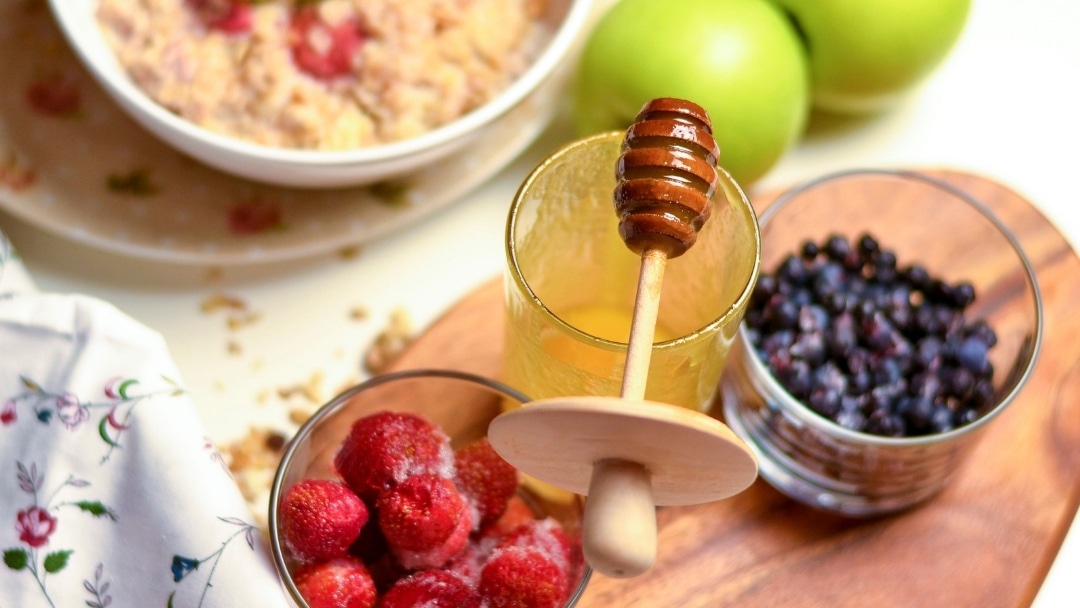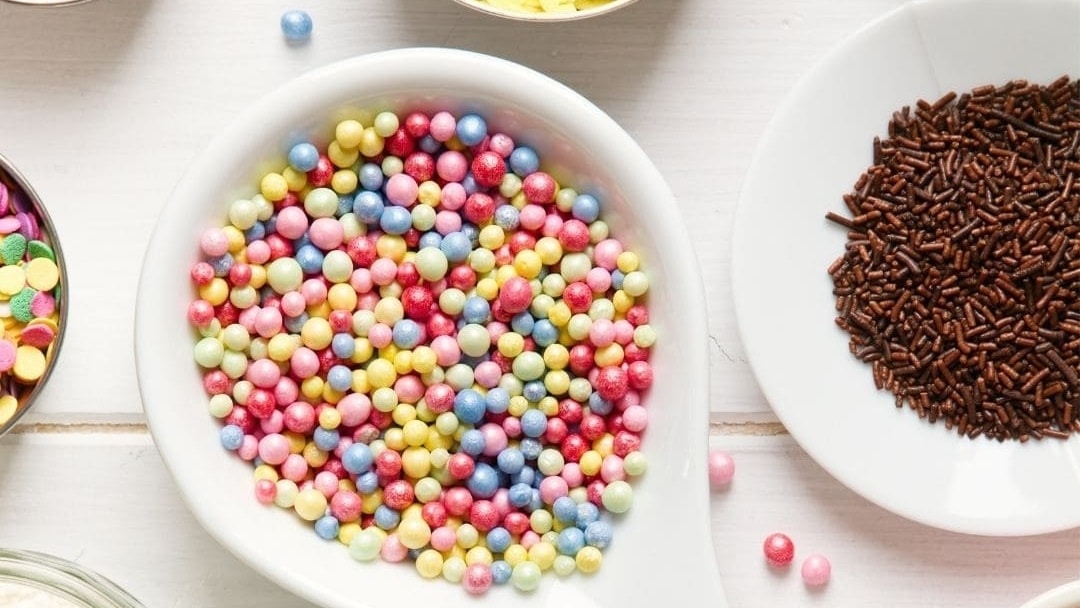We interviewed Julie Matthews, Certified Nutrition Consultant, about low phenols and salicylates for autism, ADHD, SPD and other neurodevelopmental disorders. You can watch the replay below. Please note that you will be asked to enter your email address at the 30-minute mark to finish viewing the video.
What Are Phenols and Salicylates?
Phenols and salicylates are naturally occurring substances found in foods that can cause adverse reactions in a subset of people. The Feingold diet removes foods containing high amounts of phenols and salicylates as well as articifical colors, flavors, preservatives and additives.
Some of the most common reactions to phenols and salicylates include:
- Red cheeks and/or ears after eating
- Aggressive behavior
- Hyperactivity
- Laughing too loud or inappropriately
- Impatience
- Impulsivity
In This Webinar
In this webinar, Julie discussed:
- What are phenols and salicylates?
- What are telltale signs of a phenol/salicylate sensitivity?
- How does sulfation affect phenol/salicylate sensitivity?
- Why are children with autism, ADHD and SPD as well as allergies and mood disorders more likely to have this sensitivity?
- Why are some children sensitive to phenols and salicylates?
- How do phenols and salicylates affect mood, behavior and cognition?
- How does the removal of these foods fit into the Feingold diet?
- Can healing the gastrointestinal tract lower sensitivity to foods with these compounds?
- What else can be done to decrease sensitivity to high-phenol and high-salicylate foods?
Key Discussions
The Importance of Personalized Nutrition
Nutrition should be tailored to the individual’s unique biochemistry, genetics, and life stages, as evidenced by Julis’s advocacy for bio-individual nutrition and the study she co-authored with Dr. Jim Adams which showed improvements across various age groups following personalized dietary interventions.
The Role of the Gut Microbiome in Neurodevelopmental Disorders
The gut microbiome significantly affects neuroimmune conditions like autism and ADHD, influencing symptoms and treatment results. Strategies like fecal microbiota transplants and personalized probiotics based on stool analysis are part of ongoing research to enhance understanding and management of these conditions.
Identification and Management of Food Sensitivities
Food sensitivities, particularly to phenols and salicylates, can manifest in behavioral changes and diverse symptoms. A dietary trial, such as starting with a low-phenol and -salicylate Feingold diet, is recommended for identifying sensitivities because blood testing can be inadequate. Managing sensitivities involves careful monitoring of the diet, gradual changes, and finding suitable food substitutes to make the process enjoyable and sustainable for affected children.
Understanding and Treating Phenol and Salicylate Sensitivity
Phenol and salicylate sensitivity can cause various symptoms in children with ADHD and autism. Sulfate deficiency and enzyme issues may underlie this sensitivity. Addressing these through diet (elimination of high-salicylate foods) and considering genetic factors and gut health are crucial—highlighting the interconnectedness of diet, enzyme function, and individual health conditions.
Sulfation and Nutrient Deficiencies in Neurological Conditions
Sulfation is a critical biochemical process, and impairments in it may be related to chronic health conditions like autism. Sulfate deficiency, enzyme production in the pancreas, and other nutrient deficiencies (such as zinc in pyroluria) need to be considered, and the management of such conditions may require working with knowledgeable practitioners and supportive strategies like supplementation, diet modification, and involving children in food preparation to improve health outcomes.
Timestamped Overview
00:00 CHIRP™ Study, FLIGHT™ Study, potential recovery documented.
09:54 Determined to help children with chronic health conditions.
13:45 Individualized nutrition tailored to unique biochemistry factors.
15:56 Harvard study: Genetics plays minor role in health.
24:31 Dietary intervention can help at any age.
27:30 Advances in personalized nutrition studies yield valuable data.
32:38 Consider stages in managing food sensitivities.
42:03 Research on sulfation and autism in children.
44:20 Inquiring about pancreas function and enzyme production.
52:35 Dr. Adams’ new study: personalized probiotics.
55:05 Supporting overall health through nutrition and supplementation.
01:04:10 Pyroluria causes zinc and B6 deficiency, symptoms.
01:09:00 Trial diet can help identify food sensitivities.
01:14:32 Feingold diet is good for beginners.
01:20:48 Consider dietary intervention, despite lack of symptoms.
01:22:07 Parents should trust intuition about food reactions.
01:28:07 Prepare for upcoming changes while addressing infractions.
01:34:19 Experimenting with fun, healthier sweet treat options.
01:41:18 Emphasizing personalized diets for better health outcomes.
01:42:55 Recommend keeping food journal to track symptoms.
About Julie Matthews CNC
Julie Matthews is a Certified Nutrition Consultant and Education, globally respected nutrition expert, published researcher, accomplished author, and inspirational educator.
Her guidance is backed by sixteen years of clinical experience and scientific research with complex neurological and physiological needs; particularly autism and related disorders.
She has lectured in more than 60 cities across three continents, been on television, radio, newspaper, blogs/podcasts and more, and published scientifically referenced articles in journals and websites.

Julie has been featured by Price-Pottenger, honored by the National Association of Nutrition Professionals and sits on two scientific advisory boards including the Autism Nutrition Research Center. She founded Nourishing Hope in 2005 to stand for the efficacy of improved diet and nutrition for autism, and the BioIndividual Nutrition Institute in 2014 to share the synthesis of her knowledge with cutting edge clinicians to help improve their effectiveness with therapeutic diets.
She published Nourishing Hope for Autism: Nutrition and Diet Guide for Healing Our Children in 2008. You can find out more about her work at her websites nourishinghope.com, bioindividualnutrition.com and nutritionforpregnancy.com.
Disclaimer
This webinar is not a substitute for medical advice, treatment, diagnosis, or consultation with a medical professional. It is intended for general informational purposes only and should not be relied on to make determinations related to treatment of a medical condition. Epidemic Answers has not verified and does not guaranty the accuracy of the information provided in this webinar.
Still Looking for Answers?
Visit the Epidemic Answers Practitioner Directory to find a practitioner near you.
Join us inside our online membership community for parents, Healing Together, where you’ll find even more healing resources, expert guidance, and a community to support you every step of your child’s healing journey.
Sources & References
Adams, J.B., et al. Comprehensive Nutritional and Dietary Intervention for Autism Spectrum Disorder-A Randomized, Controlled 12-Month Trial. Nutrients. 2018 Mar 17;10(3).
Alberti, A., et al. Sulphation Deficit in “Low-Functioning” Autistic Children: A Pilot Study. Biol. Psychiatry. 1999;46:420–424.
Boris, M., et al. Foods and additives are common causes of the attention deficit hyperactive disorder in children. Ann Allergy. 1994 May;72(5):462-8.
Konikowska, K., et al. The influence of components of diet on the symptoms of ADHD in children. Rocz Panstw Zakl Hig. 2012;63(2):127-34.
Matthews, J.S., et al. Ratings of the Effectiveness of 13 Therapeutic Diets for Autism Spectrum Disorder: Results of a National Survey. J Pers Med. 2023 Sep 29;13(10):1448.
McCann, D., et al. Food additives and hyperactive behaviour in 3-year-old and 8/9-year-old children in the community: a randomised, double-blinded, placebo-controlled trial. Lancet. 2007 Nov 3;370(9598):1560-7.
Millichap, J.G., et al. The diet factor in attention-deficit/hyperactivity disorder. Pediatrics. 2012 Feb;129(2):330-7.
Moss, M., et al. The Plasma Cysteine/Sulphate Ratio: A Possible Clinical Biomarker. Journal of Nutritional & Environmental Medicine. 2009 Jul;13(4):215-229.
Silfverdal, S.A., et al. [Food additives can increase hyperactivity in children. Results from a British study confirm the connection]. Lakartidningen. 2008 Feb 6-12;105(6):354-5.
Stare, F.J., et al. Diet and hyperactivity: is there a relationship. Pediatrics. 1980 Oct;66(4):521-5.
Stevens, L.J., et al. Dietary sensitivities and ADHD symptoms: thirty-five years of research. Clin Pediatr (Phila). 2011 Apr;50(4):279-93.
Resources
Books
Davis, Sheri. All Natural Mom’s Guide to the Feingold Diet: A Natural Approach to ADHD and Other Related Disorders. Sheri Davis, 2014.
Feingold, Ben. The Feingold Cookbook for Hyperactive Children, and Others Associated with Food Additives and Salicylates. Random House, 1979.
Feingold, Ben. Why Your Child Is Hyperactive: The Bestselling Book on How ADHD Is Caused by Artificial Food Flavors and Colors. Random House, 1985.
Hersey, Jane. Why Can’t My Child Behave?: Why Can’t She Cope? Why Can’t He Learn? The Feingold Diet Updated for Today’s Busy Families. Pear Tree Press, 2014.
Matthews, Julie. Nourishing Hope for Autism: Nutrition and Diet Guide for Healing Our Children. Healthful Living Media, 2008.
Websites
CBS News: ADHD Diet Study Suggests Healthy Eating May Help Kids
Chicago Tribune: Do Diet Changes Help ADHD Children?
The Feingold Diet: Our Family’s Experience with a Dye-Free Diet
Julie Matthew’s BioIndividual Nutrition recipes
Julie Matthew’s BioIndividual Nutrition Feingold Diet / Failsafe Diet



